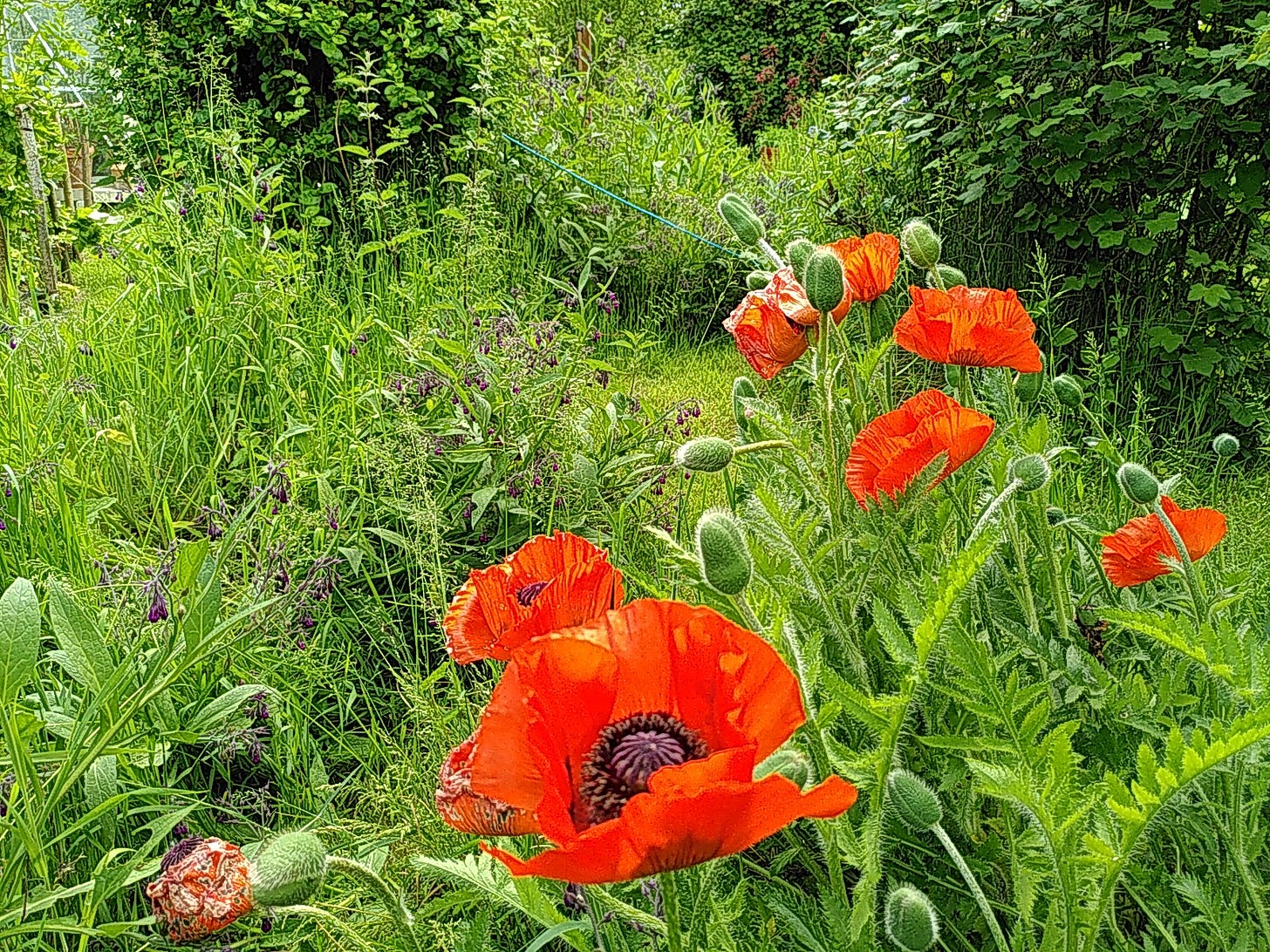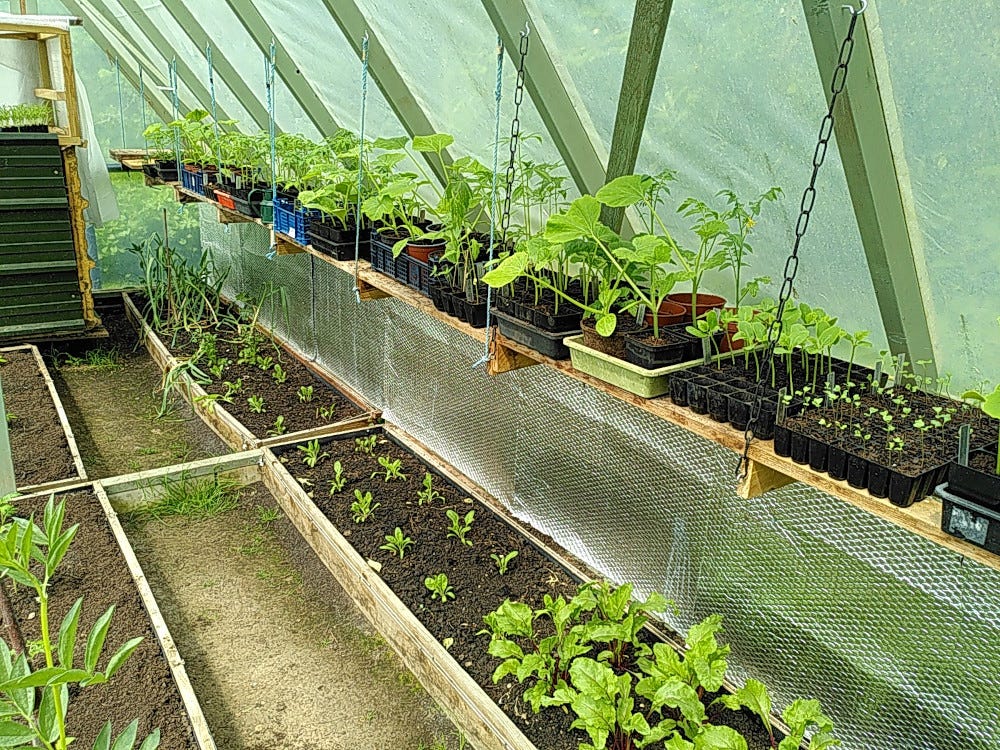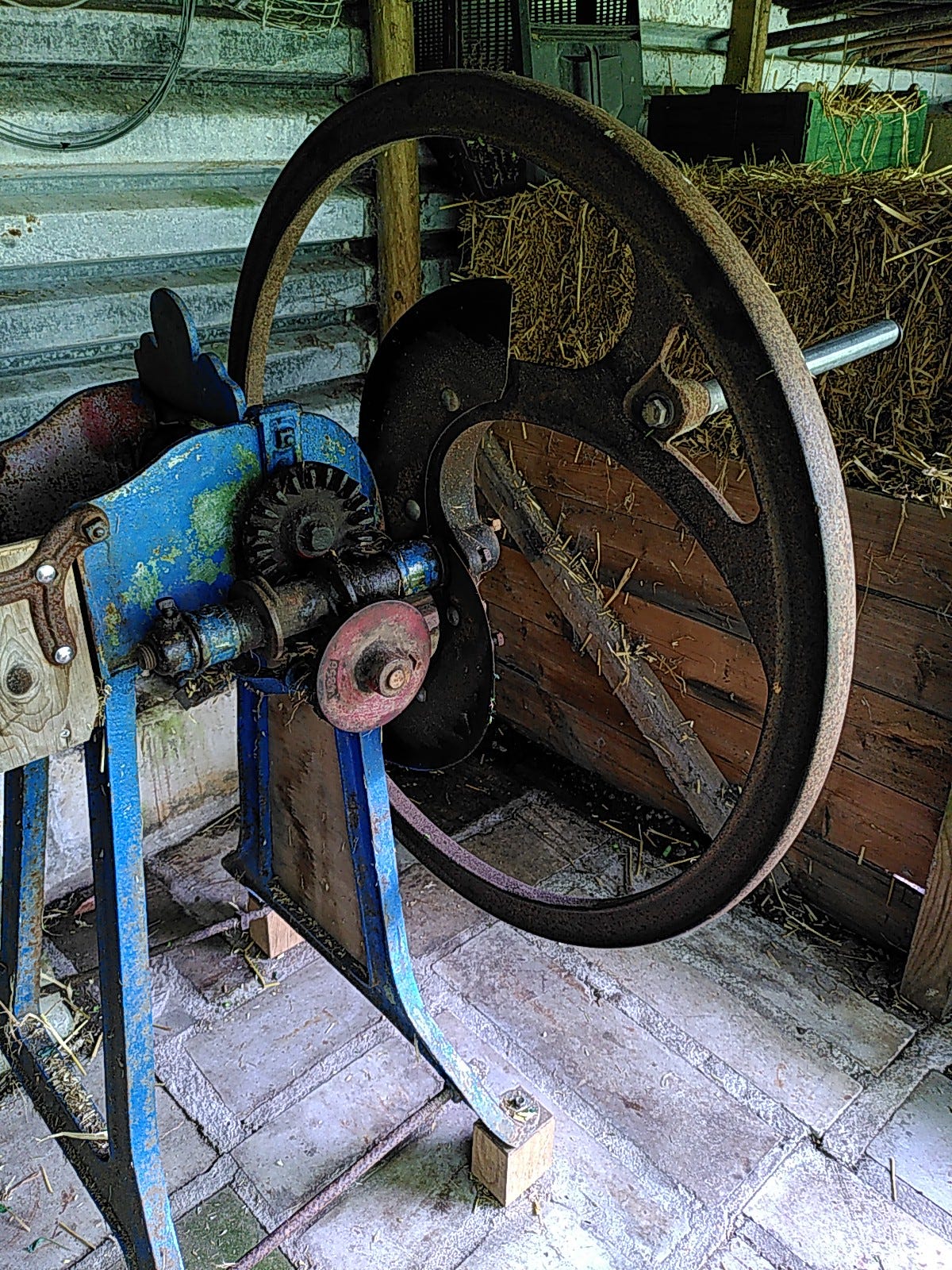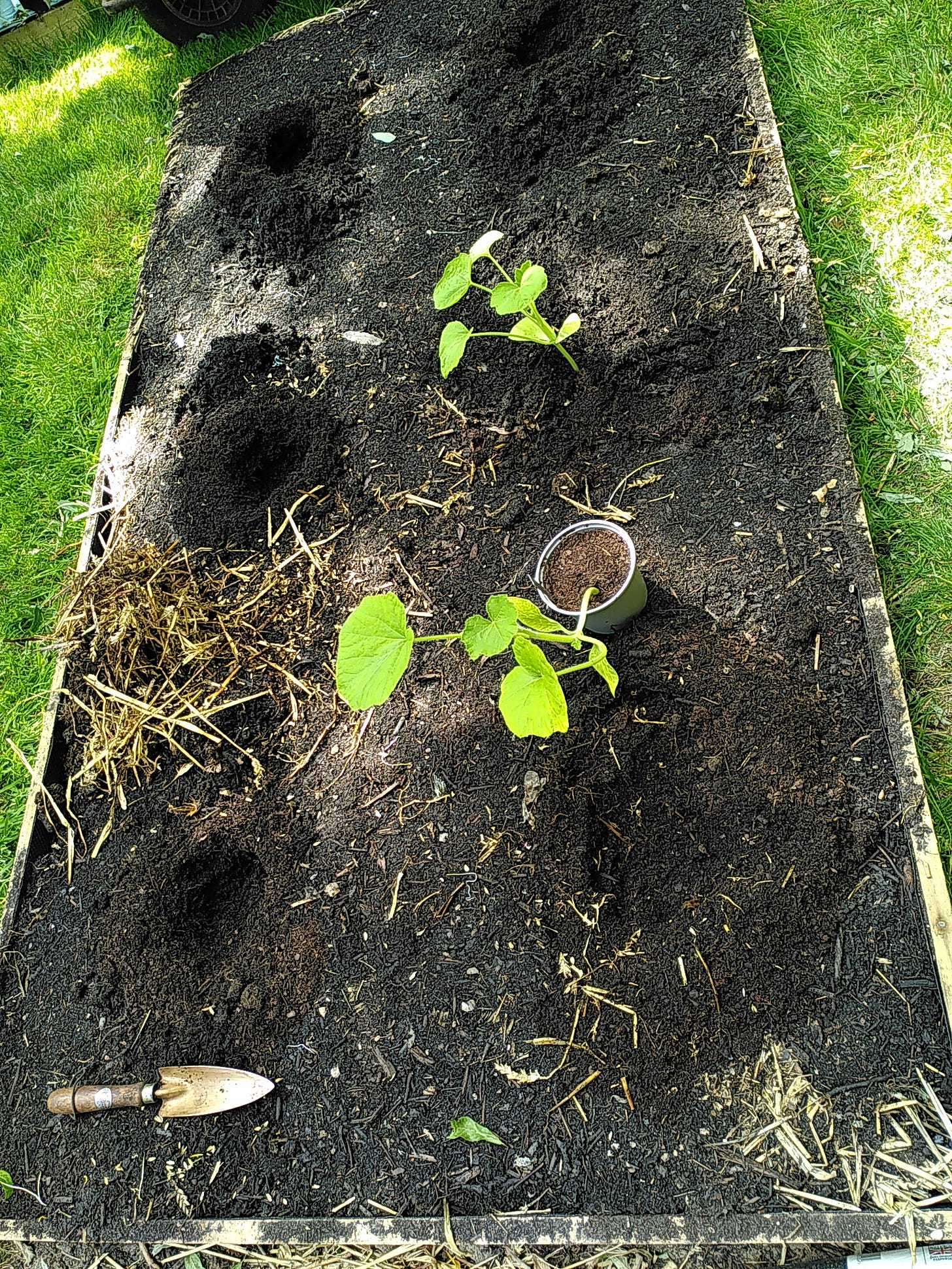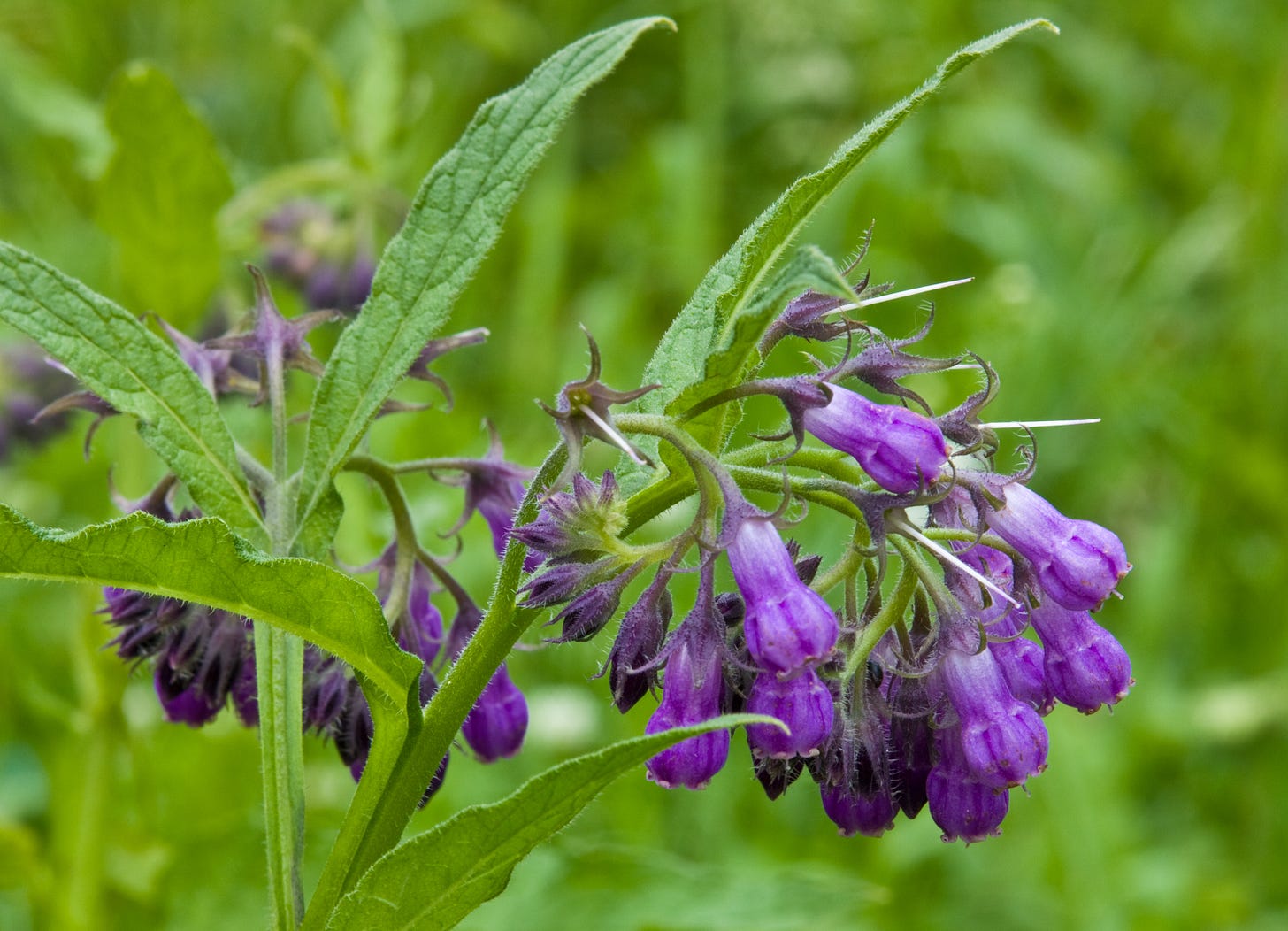Straw Bed Experiment Update
A late start to the season brings mixed results...but the technique looks promising overall.
May is the loveliest time of year by far, here in the Half Wild garden. But spring arrived very late this year; April and most of May were cold, wet, gray and unusually North-windy.
So we kept holding back, on planting out the heat-loving squashes, melons, beans, chilis, cucumbers and tomatoes—instead potting and re-potting them again and again, (and then yet again!) so they could grow on within the cozy safety of the polyhouse.
You can see some of them here on the shelf, jostling for space, all tall and gangly and waiting impatiently for warmer weather to arrive.
And then finally the beautiful weather showed up. So we got busy planting all the squashes first, as they were the ones most in need of liberation.
Which brings me to the subject of the straw beds. I talked about this raised bed-hybrid strawbale experiment in this earlier post.
Squashes will grow in just about anything, as long as there’s enough nutrient for them. They can scramble over a compost pile, or grow in a brand new raised bed while it’s still covered with black weed-excluding material. They’re really not fussy. So I figured they’d be prime candidates for the experimental hybrid straw beds.
When we took off the tarps and examined the contents of the first hybrid bed, we were delighted to see our bed-making theory seemed sound: The straw was nicely rotted to a depth of around 5 inches, and the whole bed was still quite moist, despite not having been watered or rained upon for around a month. Promising.
So I set about preparing planting holes for the first set of squashes. I’d been more than a bit concerned about the potential difficulty of doing that, because straw is notoriously hard to cut.
5 years ago when we tried our first strawbale veg garden, we were planting out tiny plug plants into the bales, or else sowing seeds directly into the compost on top of each bale. No cutting of straw was required. Because for small plug plants, you just work your fingers into the straw and compost, and smoosh it out of the way, to prepare a snug little cavity for the plant’s roots to nest into.
But this year, due to the extraordinarily late start, I had some rather jumbo-sized squashes to somehow transfer into the straw. Smooshing obviously wasn’t going to cut it. Quite possibly nothing was going to cut it.
I know this uncut-ability for a fact, because one of the excellent byproducts of growing my own heritage grain, is all the beautiful (but very long) straw left behind after harvest. Straw which needs to be cut into more manageable lengths, if I intend to use it elsewhere. Which I do.
After last year’s grain straw resisted all manner of scissors, loppers and knives, we finally bought this magnificent badboy at a farm auction, to help us with the task.
Meet JimBob, the Bamford chaff cutter.
What can I say. We have a bit of a fetish for solid cast iron, hand-operated equipment circa 1910.
Some of them (like the grain mill I showed you last time) are new, but built to a design unchanged from back when things were seriously meant to last. And some are proper antiques, like JimBob.
He does the job brilliantly by the way. Cuts through straw like it was butter.
But I digress. Back to the new squash beds.
To my relief and delight, the nicely rotted straw came out of the rather large planting holes with very little persuasion. I don’t know if you can tell from the photo, but that’s a fairly substantial mound of straw that’s been dug out of a single hole.
Although my handy copper trowel (pictured below left) was useful for starting the hole, I found that ultimately, bare hands worked best.
Copper garden tools are an interesting thing, by the way, and will be the subject of some other article.
Anyway. Into each hole went a generous amount of compost, followed by the plants. These ones are Hokkaido winter squashes. The following bed got Sibley and Buttercup (not to be confused with Butternut), both of which are also winter squashes.
I was feeling rather pleased about how well the whole thing had gone. But less than 24 hours later, I checked in on that first bed, and the plants were looking alarmingly stressed.
Partly because of the cool breezes they were getting. Historically, we get very strong winds sometimes, but nearly always from the Southwest. So all of our windbreaks are geared up for that direction.
But lately we’re getting much colder Northeasterly winds. So even a relatively gentle breeze from that direction, was proving to be too much for these new transplants to cope with.
Plus I don’t think they love the straw as a planting medium. There’s a ton of nutrient in there, at least theoretically. But maybe in order to access it, they’ll have to get over the transplant shock first, before they can adapt to their strange new environment.
In any case, I apologized deeply for the upset, and then gave them each a nutrient boost of comfrey tea, which they all seemed to appreciate. After which Steve built them appropriately sturdy windbreaks.
We’ll see how the straw beds perform throughout the rest of the season. Hopefully the squashes will adapt to their growing medium and won’t need constant comfrey supplementation.
Not like we’re ever going to run out of comfrey tea; that’s not the issue. We have lots and lots AND LOTS of comfrey here in the garden. So it’s no problem to keep it coming, if that’s what’s needed.
But I’m just really hoping the beds will turn out to be good sources of available nutrient, all on their own. That was kind of the point of the whole experiment.
We’ll see how it goes. Watch this space.


